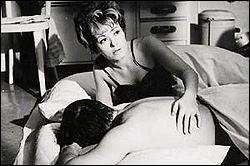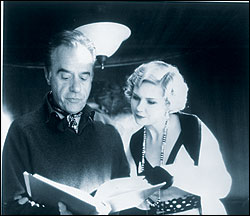Made in 1970 in the former Czechoslovakia, this Soviet-era satire from director Karel Kachyna was considered too astute a portrayal of party politics for the Commies’ comfort zones. The movie was banned and withheld until 1989, and a subsequent Golden Palm nomination at Cannes in 1990 did little to eradicate The Ear‘s obscurity. A handful of festival dates and 15 years later, it remains unavailable on video; the lone U.S. print now makes a typically belated Seattle debut, running Friday, May 20, to Thursday, May 26, at the Grand Illusion.
The two best reasons for seeing The Ear are Josef Illík’s superb black-and-white cinematography and leading man Radoslav Brzobohatý’s performance as Ludvík, a Prague official around whose paranoia the plot spins. Dashingly handsome, with a mountain of dark hair, Brzobohatý, then 38, resembles Laurence Harvey—only more buff. Pacing through the gloomy house he shares with his churlish, alcoholic wife, Anna (Jirina Bohdalová), Ludvík replays incidents from a black-tie reception held earlier in the evening. Might there be clues as to why he’s come home to a power outage, which curiously doesn’t affect a neighbor’s house, and to a trio of suspicious characters in trench coats prowling the back garden? Is the electronic “ear” of his superiors eavesdropping on them?
The movie cuts back and forth between the brightly lit, bizarre goings-on at Anna and Ludvík’s lavish night out with their comrades and their rounds of domestic squabbling, played out in the flicker of candle flames. Some of Illík’s images are worthy of Kubrick. The best is a split- focus composition of party guests who form a frog-leaping conga line on the lower right of the frame, while high above on the left, Greek statues and marble cherubs perch in indifference or disapproval. Also excellent is Svatopluk Havelka’s orchestral score that mixes low strings with marimba, bongos, hints of harpsichord, and the deliciously deranged glissandi of prepared piano—music that has a grand sweep in its own crimped, sinister way.






